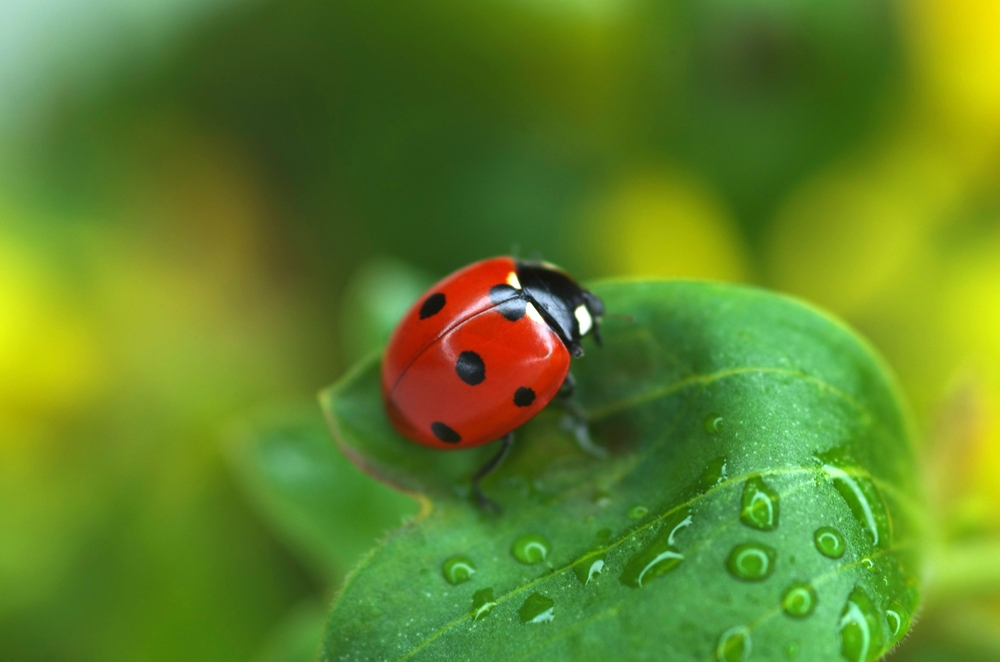10 Incredible Facts About Ladybugs for Nature Enthusiasts

Ladybugs, often cherished for their vibrant colors and charming presence, are more than just a delight to see in gardens and parks. These tiny beetles, known scientifically as coccinellids, play crucial roles in maintaining ecological balance and supporting plant health.
Despite their small size, ladybugs are formidable predators of pests, making them invaluable allies for gardeners and farmers alike. Their significance extends beyond their practical benefits, as they have also been subjects of cultural fascination and symbolism throughout history.
In this post, we will delve into 10 incredible facts about ladybugs that nature enthusiasts will find both intriguing and enlightening.
Fact 1: Diverse Species
Ladybugs are a diverse group with over 5,000 species identified worldwide, each displaying unique traits and adaptations. These species vary greatly in color, size, and pattern, with the most recognized being the red and black-spotted variety, often referred to as the seven-spot ladybird.
However, ladybugs can also appear in shades of yellow, orange, black, and even pink. Some species, like the two-spot ladybird, are identified by the number of spots on their elytra, while others may showcase distinctive markings or even stripe patterns.
This diversity not only adds to their visual charm but also supports their roles in different ecological niches, enhancing their effectiveness as natural pest controllers across various environments.
Fact 2: Natural Pest Control
Ladybugs are renowned for their role in natural pest control, acting as a crucial line of defense against aphids, mites, and other harmful insects that threaten plant health. As voracious predators, a single ladybug can consume up to 50 aphids a day, making them highly effective in regulating pest populations without the need for chemical pesticides.
This not only helps maintain the health and productivity of gardens and agricultural crops but also contributes to more sustainable farming practices by reducing the environmental impact associated with synthetic pest control methods.
The presence of ladybugs thus enhances garden health by protecting plants from damage, promoting vigorous growth, and ultimately leading to higher crop yields.
Their role in agriculture is particularly significant, as they support the protection of a variety of crops from pest infestation, ensuring the stability of food sources and contributing to the overall health of ecosystems.
Fact 3: Unique Defense Mechanisms
Ladybugs have developed a range of unique defense mechanisms to protect themselves from predators. One of their most notable strategies is the secretion of a yellow, foul-smelling fluid from their leg joints when threatened. This substance, known as hemolymph, contains toxic compounds that deter potential predators from making a meal out of these colorful beetles.
Additionally, ladybugs exhibit a behavior called “reflex bleeding,” where they release this fluid as a form of warning. Another critical form of defense is their striking aposematic coloration—bright red, yellow, or orange hues with black spots—which serves as a visual warning to predators of their unpalatability and potential toxicity.
By combining chemical defenses with bold visual signals, ladybugs effectively reduce the risk of predation and increase their chances of survival in the wild.
Fact 4: Life Cycle Stages
The life cycle of a ladybug is a fascinating process that unfolds through four distinct stages: egg, larva, pupa, and adult. It all begins when a female ladybug lays clusters of small, yellow eggs on the underside of leaves, usually near a plentiful food source such as aphid colonies.
Within a few days, these eggs hatch into tiny, black-and-orange larvae, which bear little resemblance to their adult counterparts. The larval stage, lasting about two to three weeks, is a period of rapid growth and voracious feeding, as the larvae consume vast quantities of pests.
Once fully grown, the larvae attach themselves to a leaf or stem and enter the pupal stage. Inside the pupal casing, a remarkable transformation, or metamorphosis, occurs, culminating in the emergence of a fully-formed adult ladybug.
This final stage brings the familiar sight of a spotted, hard-shelled beetle ready to continue the cycle of life. Each stage of this life cycle plays a crucial role in the development and survival of ladybugs, ensuring their continued presence as vital allies in natural pest control.
Fact 5: Migration and Hibernation
Ladybugs exhibit fascinating behaviors when it comes to migration and hibernation, which are vital for their survival across different seasons and environmental conditions.
Many species of ladybugs engage in long-distance migration to find suitable habitats for overwintering. These migrations often occur in large congregations, sometimes numbering in the thousands, as they move to warmer areas or higher altitudes in search of ideal conditions.
As the weather cools and food becomes scarce, ladybugs enter a state of diapause, a form of hibernation, to conserve energy. During this period, they seek sheltered locations such as under tree bark, inside houses, or amidst leaf litter to remain safe from predators and harsh weather.
This behavior not only helps them survive the winter months but also ensures they are ready to resume their essential role in pest control when spring arrives.
Understanding these migration and hibernation patterns is crucial for conservation efforts, as it highlights the importance of preserving their natural habitats and the ecological corridors that facilitate their seasonal movements.
Fact 6: Symbolism in Culture
Ladybugs have held a place of prominence in myths and folklore across various cultures, each attributing unique meanings and significance to these charming beetles.
In many European traditions, ladybugs are considered harbingers of good luck and fortune. It is believed that when a ladybug lands on you, it’s a sign of impending good news or a period of prosperity.
In agricultural societies, the sight of a ladybug was particularly welcomed as a promise of a bountiful harvest, thanks to their pest-controlling abilities.
Meanwhile, in some Asian cultures, ladybugs are thought to be emissaries of love, with their appearance heralding a new romance or the reaffirming of existing bonds. Native American tribes also revere the ladybug, seeing it as a symbol of transformation and renewal due to its remarkable life cycle stages.
Across these diverse societies, the ladybug’s vibrant colors and beneficial roles in nature have elevated it from a mere insect to a powerful symbol entwined with human hopes, beliefs, and aspirations.
Fact 7: Ladybug Anatomy
Ladybugs possess a unique anatomical structure that significantly aids their survival and efficiency in both predation and defense. Their small, domed bodies are protected by a pair of hardened forewings, known as elytra, which shield the delicate hindwings and soft abdomen underneath.
These elytra not only offer physical protection from predators and environmental hazards but also allow for quick, agile flight when searching for food or evading threats. Underneath the elytra, the membranous hindwings unfold for flight, capable of rapid, sustained movement that enables ladybugs to cover large areas in search of prey efficiently.
Additionally, the ladybug’s legs are equipped with tiny claws that help them grasp onto plant surfaces with ease, providing stability as they navigate through foliage. Their antennae serve as vital sensory organs, detecting chemical cues in their environment to locate aphid colonies or communicate with other ladybugs.
The combination of these anatomical features ensures that ladybugs remain effective as natural pest controllers, adept at surviving and thriving in varied ecosystems.
Fact 8: Feeding Habits
Ladybugs are voracious predators renowned for their beneficial impact on plant health due to their diet and feeding behavior. Primarily, they consume a wide variety of soft-bodied insects, with a particular preference for aphids, which are notorious agricultural pests.
A single ladybug can eat up to 5,000 aphids in its lifetime, making them indispensable allies for farmers and gardeners striving to maintain healthy crops. In addition to aphids, ladybugs also feed on other harmful insects such as mites, scale insects, and mealybugs.
By preying on these pests, ladybugs significantly reduce the need for chemical pesticides, promoting a more sustainable and eco-friendly approach to pest management.
Moreover, their presence helps prevent the spread of plant diseases that are often facilitated by the sap-sucking activities of these pests, thereby enhancing overall plant vitality and crop yield.
The feeding habits of ladybugs not only support their survival but also play a critical role in maintaining the balance of ecosystems and protecting agricultural productivity.
Fact 9: Ladybug Conservation
The current status of ladybug populations is a subject of growing concern for entomologists and conservationists alike.
Over recent years, studies have revealed declines in several native species, attributed to factors such as habitat loss, pesticide use, and climate change. This decline is particularly troubling considering the vital role ladybugs play in natural pest control, which benefits agricultural practices and ecological balance.
Efforts to conserve ladybug habitats are paramount to ensuring their survival and continued contribution to ecosystems. Initiatives such as creating pesticide-free zones, planting diverse and native vegetation, and preserving natural hedgerows can offer refuge and food sources for ladybugs.
Furthermore, citizen science projects and educational campaigns can augment these conservation efforts by increasing public awareness and participation in habitat preservation.
Safeguarding ladybug populations is essential not only for the ecological services they provide but also for maintaining the health and stability of our natural environments.
Fact 10: Fascinating Behaviors
Ladybugs exhibit a range of unusual and intriguing behaviors that significantly contribute to their survival. One such behavior is their ability to play dead, or thanatosis, which serves as an effective defense mechanism against predators. When threatened, a ladybug may drop to the ground and remain motionless, mimicking a lifeless state to avoid further attention.
Additionally, ladybugs secrete a yellowish, foul-smelling fluid from their leg joints, known as reflex bleeding, to deter potential attackers.
The chemical composition of this fluid is toxic to many birds and small mammals, providing an additional layer of protection. Another fascinating behavior is the aggregation seen during certain times of the year, particularly in colder months.
Ladybugs congregate in large groups to hibernate, seeking warmth and protection in numbers. This communal hibernation is not only a survival tactic against harsh weather but also conserves their energy during periods of low food availability.
These behaviors, from feigning death to chemical defense and communal living, showcase the adaptability and resourcefulness of ladybugs, ensuring their persistence in a variety of environments.
Conclusion
Ladybugs are truly remarkable creatures, playing indispensable roles in our ecosystems and captivating our imaginations with their vibrant colours and fascinating behaviours. As we’ve explored, from their unique anatomical features and efficient predatory habits to their impressive survival strategies and the concerning decline in their populations, ladybugs are much more than just pretty insects.
Their ability to control agricultural pests naturally highlights their importance in maintaining healthy crops, while their communal hibernation behaviors and defense mechanisms showcase their incredible adaptability and resourcefulness.
For nature enthusiasts, observing ladybugs in their natural environment offers a window into the intricacies of ecological interactions and the harmony of natural pest control. It is crucial to recognize the significance of these beetles and take steps to protect their habitats.
Simple actions such as reducing pesticide use, planting a variety of native plants, and participating in citizen science projects can contribute to the conservation of ladybug populations.
By fostering an environment where ladybugs can thrive, we not only aid in the preservation of these fascinating creatures but also support the broader goal of maintaining ecological balance and promoting sustainable agricultural practices.
So next time you see a ladybug, take a moment to appreciate its beauty and the vital role it plays in our world. Together, we can ensure that future generations will continue to marvel at these extraordinary insects and benefit from their presence in our gardens and fields.




